LlCH
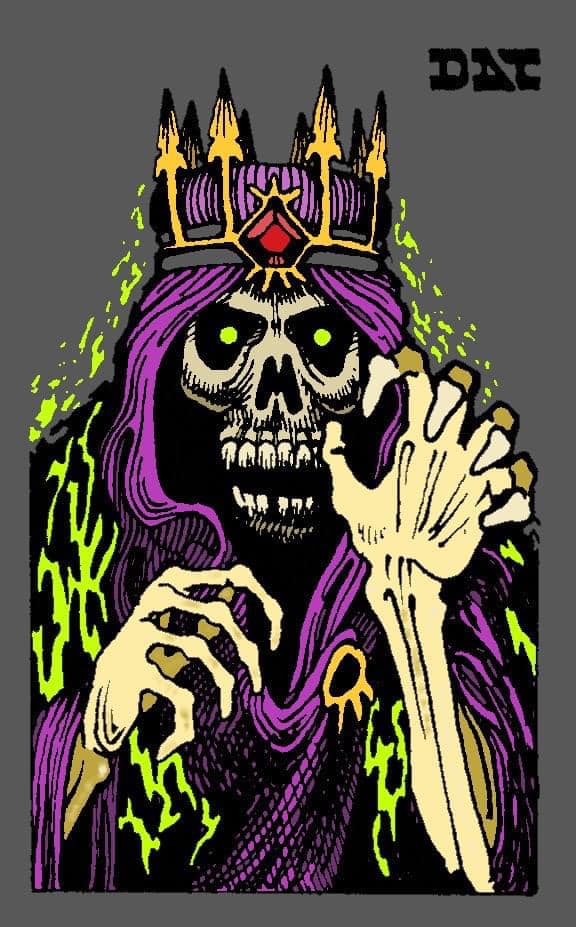
-
FREQUENCY: Very rare
FREQUENCY:
Uncommon ([Dungeon Level X])
NO. APPEARING: 1
ARMOR CLASS: 0
MOVE: 6"
HIT DICE: 11+
% IN LAIR: 90% <(in some
wilderness AREA || vast underground labyrinth)> (1 Lich: desert, TPL60:10th,
REF3.85)
TREASURE TYPE: [A]
NO. OF ATTACKS: 1 ~ 10
DAMAGE/ATTACK: 1-10 + special
SPECIAL ATTACKS: Paralyzation,
fear, spell use, (psionics)
SPECIAL DEFENSES: Magic
weapons only can hit, immunity to some magic
MAGIC RESISTANCE: Standard
INTELLIGENCE: Supra-genius
ALIGNMENT: Neutral (evil)
<"surpassing evil" according to the MM2, which seems to contradict the
(evil)>
SIZE: M
PSlONlC ABILITY: See below
Attack/Defense
Modes: See below
LEVEL/X.P. VALUE: X | 10,500
+ 16
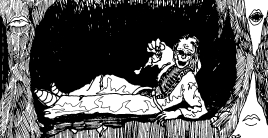
A lich exists because of
its own desires and the use of powerful and arcane
magic. The lich passes from
a state of humanity to a non-human, non-
living existence through
force of will. It retains this status by certain
conjurations, enchantments,
and a phylactery. A lich is most often
encountered within its hidden
chambers, this lair typically being in some
wilderness AREA or vast
underground labyrinth, and in any case both
solidly constructed of stone
and very dark. Through the power which
changes this creature from
human to lich, the AC becomes the
equivalent of +1 plate armor
and +1 shield (AC 0). Similarly, hit <apply NAC modifiers?>
dice are 8-sided, and the
lich can be affected only by magical attack forms
or by monsters with magical
properties or 6 or more HD.

Liches were formerly ultra
powerful magic-users or magic-user/clerics
of not less than 18th level of magic-use.
Their touch is so cold
as to cause 1-10
points of damage and paralyze
opponents who fail to make their saving
throw. The mere sight of
a lich will cause any creature below 5th level (or
5 hit dice) to flee in panic
from fear. All liches are able to use magic
appropriate to the level
they had attained prior to becoming non-human.

The following spells or attack
forms have no effect on liches:
charm, sleep, enfeeblement,
polymorph, cold, electricity, insanity or death
spells/symbols.
Description: A lich
appears very much as does a wight or mummy, being of
skeletal form, eyesockets
mere black holes with glowing points of light,
and garments most often
rotting (but most rich).
QUESTION: What would
happen if you hit a Lich with a Rod
of Resurrection?
ANSWER:The Lich would
have to make a system shock roll if he is 120 years old or younger. (Generation
of Ability Scores: NPCs)
If he is older than 120,
then it would have no effect.
However, if he is young
enough and makes his system shock roll, he is resurrected, and you now
have a mad, very high-level, evil Magic-User facing you. <or, MU/cleric>
Either way, you have your
hands full.
Remember, the Lich loses
all of his Lich abilities if resurrected.
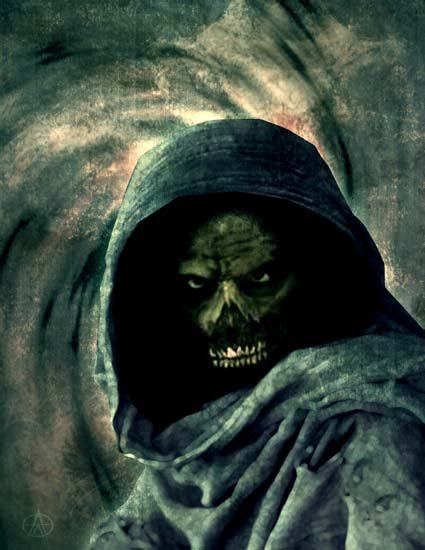
Question: A lich is
said to use a combination of will power, enchant-
ments, arcane magick, a
phylactery and larva essence to main-
tain undead status. What
exactly are the processes involved in
becoming a lich and maintaining
that status?
Answer: There is no
“ultimate recipe” for becoming a lich, just as there
is no universal way of making
a chocolate cake. Only those
things which are generally
true are stated in the AD&D rules--a
M-U
or cleric gains undead status through “force of will”
(the desire to be a lich,
coupled with magical assistance) and
thereafter has to maintain
that status by special effort, employ-
ing “conjurations, enchantments
and a phylactery” (from the
lich description in the
MM).
The essence of larvae,
mentioned as one of the
ingredients in the process (in the MM
description of larvae) might
be used as a spell component, or
might be an integral part
of the phylactery: Exactly what it is, and
what it is used for, is
left to be defined by characters and the DM,
if it becomes necessary
to have specific rules for making a lich.
Several
combinations of spells might trigger or release the
energy needed to transform
a magic-user or m-u/cleric into a
lich; exactly which combination
of magic is required or pre-
ferred in a certain campaign
is entirely up to the participants.
The subject has been addressed
in an article in DRAGON maga-
zine (“Blueprint
for a Lich,” by Len Lakofka, in #26), but that
“recipe” was offered only
as a suggestion and not as a flat
statement of the way it’s
supposed to be done.
No matter
what ingredients and procedures are defined in any
“recipe” for a lich, it
should be virtually (if not completely)
impossible for a PC to perform
the process on
himself —and if the attempt
at becoming a lich does succeed,
the character should no
longer be allowed to operate as a PC.
A character might have a
long and prosperous xistence as a lich,
but would not be able to
be considered an adventuring character —
in fact, there would be
no reason or incentive for a PC lich to be an adventurer,
because XP are meaningless
to a character who
can’t rise in levels and
gain new abilities. Besides, who knows
how much time it takes to
maintain lich status? Maybe a lich
player character would have
to spend all his time working to
maintain lich-hood, with
no time left to “enjoy” the fruits of his
labor.
LICHES
As liches take a great deal
of time to prepare, the following two are provided for those instances
when they are
encountered as wandering
monters. It would be best to have these monsters prepared ahead of time
or placed
instead of as random encounters,
but this is not always possible. The spells listed have been chosen for
attack and
defense capabilities. It
is possible, if a lich has adequate advance warning, for special spells
to be prepared
(for example, guards
and wards, Mordenkainen's faithful hound or invisibility) in place
of those listed.

All liches have the following
abilities in common: AC: 0, No. of Attacks: 1, Damage/Attack: 1-10. Opponents
touched by a lich must save
vs. paralyzation. Any creature below 5 HD/levels will automatically flee
in fear at
the sight of a lich. Liches
are immune to the following forms of attack: polymorph, cold,
electricity,
insanity,
charm, sleep,
and death spells/symbols.
Lich
#1
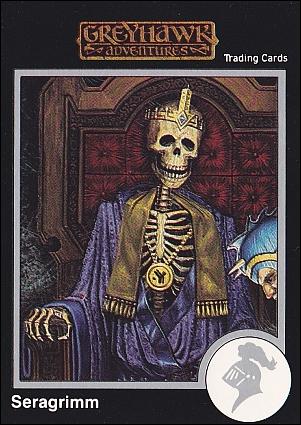
HP: 51
Formerly 18th level MU.
Spells
First: magic
missile (x5), charm person, protection from good, shocking grasp;
Second: mirror image, invisibility,
shatter, stinking cloud, web;
Third: dispel magic, hold
person, lightning bolt (x2), slow;
Fourth: confusion, ice storm,
polymorph self, bestow curse;
Fifth: cloudkill, cone of
cold, magic jar, extension III, passwall;
Sixth: disintegrate, flesh
to stone, death spell;
Seventh: monster summoning
V, power word stun, vanish;
Eighth: Otto's irresistible
dance, mass charm;
Ninth: time stop.
Lich
#2
HP: 48
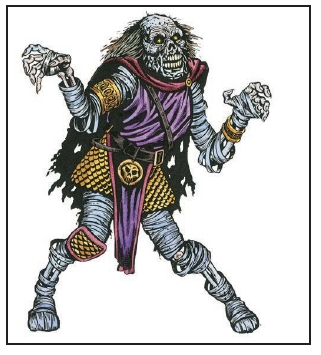
-
This lich was formerly a
double-classed human magic-user/cleric, 19th and 21st levels respectively.
As it was an
evil cleric, it has retained
all its clerical spell ability.
Clerical Spells
1st:command
(x2), curse (x2), cause light wounds
(x3), protection from good, darkness, detect good, create water
2nd: hold person (x3), spiritual
hammer, resist fire, silence: 15' radius, snake charm (x2), speak with
animals, augury, know alignment
3rd: dispel magic, animate
dead (x3), bestow curse, cause blindness (x2), cause disease, dispel magic
(x2), continual darkness
4th: cause serious wounds
(x3), poison (x2), sticks to snakes (x3), protection from, 10' radius,
confuse tongues, raise water
5th: cause critical wounds,
dispel good, flame strike, insect plague, quest, SLAY living, true seeing,
plane shift
6th: animate object, blade
barrier, conjure animals (x2), word of recall, harm
7th: gate, symbol
Magic-User Spells
1st: spider climb, magick
missile, affect normal fires, ventriloquism, enlarge
2nd: invisibility, knock,
stinking cloud, web, pyrotechnics
3rd: monster summoning I,
phantasmal force, protection from normal missiles, fireball, lightning
bolt
4th: monster summoning II,
polymorph other, enchanted weapon, fire shield (type B), wall of ice
5th: conjure earth elemental,
feeblemind, monster summoning III, animal growth, teleport
6th: monster summoning IV,
globe of invulnerability, Otiluke's freezing sphere
7th: monster summoning V,
phase door, vanish
8th: monster summoning VI,
maze, power word: blind
9th: monster summoning VII
Blueprint
For A Lich
Vampire’s Blood,
Belladonna & A Virgin’s Heart Well Simmered
by Len Lakofka
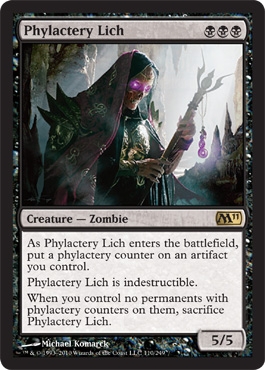
Liches are high level clerics
or magic users who have become very
special undead.
Before becoming a Lich, the cleric or magic user must
have been at least 14th
level in life, although 18th level is most com-
mon. Once a lich is created,
it might drop in level, but below 10th level,
one can not exist.
Preparation for Lichdom occurs
while the figure is still alive and
must be completed before
his first “death.” If he dies somewhere along
the line and is resurrected,
then he must start all over again.
The would-be lich needs these
spells. Magic Jar, Trap the Soul, and
Enchant an Item, plus
a special potion and something
to “jar” into.
The item into which the lich
will “jar” is prepared by having Enchant
an Item cast upon it.
The item cannot be of the
common variety,
but must be of high quality,
solid, and of at least 2,000 g.p. in value.
The
item must make a saving
throw as if it were the person casting the spell.
(A cleric would have to
have the spell Enchant an Item and Magic Jar
thrown for him and it is
the contracted magic user’s level that would be
used for the saving throw.)
The item can contain prior magics, but
wooden items are not acceptable.
If the item accepts the Enchant
an Item spell (this requires 18+
(Z-O) hours), then Trap
the Soul is cast on the item. Trap the Soul has a
chance to work equal to
50% + 6%/level of the magic user/cleric over
11th level. (A roll of 00
is always failure.) If the item is then soul recep-
tive, the prepared candidate
for Lichdom will cast Magic Jar on it and
enter the item. As soon
as he enters the jar he will lose a level at once
and the corresponding HP.
The HP and his soul are now
stored in the jar. He then
must return to his own body and must REST for
2-7 days. The ordeal is
so demanding that his top three levels of spells
are erased and will not
come back (through reading/prayer) until the
rest period is up.
The next time the character
dies, regardless of circumstances, he
will go into the jar,
no matter how far away and no matter what the
obstacles (including Cubes
of Force, Prismatic Spheres, lead boxes,
etc.). To get out again,
the MU/Cleric must have his (or another’s) re-
cently dead body within
90 feet of the jar. The body can be that of any
recently killed creature,
from a mouse to a kirin. The corpse must fail its
save versus magic to be
possessed. The saving throw is that of a
one-half HD figure for a
normal man, animal, small monster, etc.,
regardless of alignment,
if the figure had three or fewer HD in life. If it
had four or more HD, it
gains one of the following saving throws,
according to alignment:
Good Lawful, Good Choatic, Good Neutral —
normal saving throw as in
life; Neutral Lawful, Neutral Choatic, Pure
Neutral — normal save as
in life -3; Evil Lawful —save
-4; Evil Neutral —save -5;
Evil Chaotic —save -6. The
corpse can be dead no longer
than 30 days. If it makes its save,
it will never receive the
lich. The MU’s/Cleric’s own corpse can be dead
any length of time and is
at -10 to receive him. He may attempt to enter
his own corpse once each
week until he succeeds.
If the lich enters another’s
corpse, he will have the limited abilities
of the corpse when it comes
to physical strength. Intelligence and
wis-
dom will be his own, regardless
of what the corpse had. It can have no
more than four HD, and will
behave as a wight, but has no energy
draining ability. If the
corpse could CAST spells in life, then the possessed
corpse may CAST up to, but
not beyond, the 4th level of spell ability. The
wightish body will be telepathic
if the corpse could speak in life.
In the wightish body, the
lich will seek his own body and transport it to
the location of the jar.
Destruction of his own body is possible only via
the spell Disintegrate and
the body gets a normal save versus
the spell. Dismemberment
or burning the body will not totally destroy it,
as the pieces of the corpse
will radiate an unlimited range Locate Object
spell, Naturally it may
be difficult for the lich to obtain these pieces/
ashes, but that is another
story. If and when the wightish body finds the
remains of the lich’s original
body, it will eat them and after one week
will metamorphosis into
a humanoid body similar to that of the lich’s
original body. Once the
lich is back in his own body he will have the spell
he had in life and never
has to read/pray for them again. In fact he can
not, except once to “fill
up” his spell levels. As a lich, he can never gain
levels, use scrolls, or
use magic items that require the touch of a living
being.
Each time the lich returns
his life force to the jar, it always costs him
a level. When he drops to
10th level, any subsequent return to the jar
destroys the lich. The lich
will try to teleport back to the jar,
however,
before he is “killed” (that
is, before he goes to zero hit points). If he does
go to zero points, he is
destroyed forever! If he has the spell Teleport, the
lich can transport his body,
also, but just his “life force” goes back into
the jar. (He does not, however,
need the spell Teleport to get just his life
force back to the jar, although
if he loses his body in this manner, he
must start the search for
it all over again.
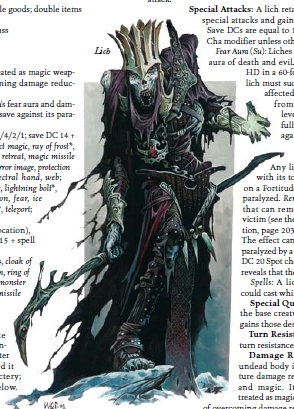
If his body is disintegrated
then the lich can only be a Wightish
body unless he can find
someone to cast a wish for him to get the
body
back together again. The
jar must be on the prime material, the negative
material
or the positive material plane and of course he must have a
means of gaining access
to the appropriate plane in the first place.
A living person will never
radiate anything that will indicate he is
prepared for Lichdom. No
Charm will ever make him tell this fact or
where his jar is hidden!
However a Charm can make him tell what the
jar is. In like manner,
Locate an Object will not find a Lich’s Jar unless a
God ranked figure is willing
to cast the spell and its range is limited to
100 miles in only one plane!
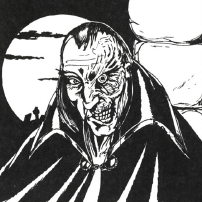
The Lich must find a means
of continual access if he places his Jar
on another plane. Hirelings
can be charmed (paid) to keep a supply of
dead bodies (under 30 days)
at his disposal but that is risky. A Jar hid-
den too well may never offer
a corpse for him to enter. A Lich may elect
to commit suicide to save
himself a lot of trouble later on.
Preparing the body of the
living figure is done via a potion. The
potion is difficult to make
and time consuming. It requires these items:
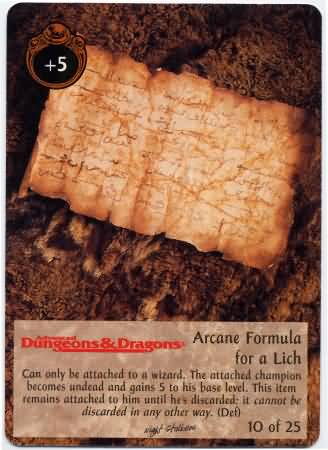
A. 2 pinches
of pure arsenic
B. 1
pinch of belladonna
C. 1
measure of fresh phase spider venom (under
30 days old)
D. 1
measure of fresh wyvern venom (under 60 days old)
E. The
blood of a dead humanoid infant killed by a phase spider
F. The
blood of a dead humanoid infant killed by a mixture of arsenic and belladonna
G. The
heart of a virgin humanoid killed by wyvern venom
H. 1
quart of blood from a vampire or a person infected with vampirism
I. The
ground reproductive glands of 7 giant moths (dead for less than 60 days)

The items are mixed in the
order given by the light of a full moon.
When he drinks the potion
(all of it) the following will occur:
| 1-10 |
No effect whatsoever other
than all body hair falling out — start over! |
| 11-40 |
Coma for 2-7 days — the
potion works! |
| 41-70 |
Feebleminded
until dispelled by Dispel Magic.
Each attempt to remove the
feeblemind has a 10% chance to kill him instead if it fails. The potion
works! |
| 71-90 |
Paralyzed for 4-14 days.
30% chance that permanent
loss of 1-6 dexterity points will result. The potion works! |
| 91-96 |
Permanently deaf, dumb or
blind.
Only a full wish can regain
the sense. The potion works! |
| 97-00 |
DEAD — start over . . .
if you can be resurrected. |
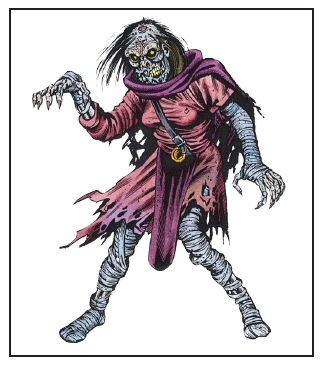
-

Quote:
Originally posted by
Larcen
2) How do you pronounce
Gygax, Ioun, Iuz, Tarrasque, Lich, and Tiamat? I pronounce them GUY-gax,
Yoon, Yuz, tar-ASK, litch, and TEE-a-matt.

2. GUY-gax is how my family
pronounces the name, but in proper Swiss it is pronounced GHE-gox.
As for Ioun, I say Eeun
but Yoon sounds fine,
and so too Eeuse, but Yuz
is okay,
We almost agree on the pronunciation
of Terrasque--err-ASK TO YOUR tar-ASK,
WE HARMONIZE ON litch (many
prefer lick),
and Tiamat as TEE-a-matt.
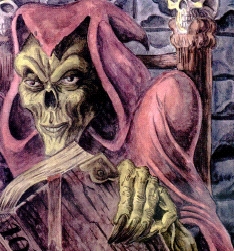
Quote:
Originally posted by
johnsemlak
2. Was there any particular
inspiration for the lich?

Actually, no. The lich just
seemed a natural for the upper ranks of the undead in the game, so I created
the various features of that monster for the system, and used only broad
general knowledge to do so.
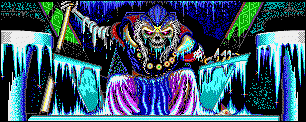
Quote:
Originally Posted by Andrew
D. Gable
You may have addressed this
question before, Gary, but there is a discussion going on about where exactly
the lich originated. I'm inclined to say the lich/phylactery was based
on Sauron/Ring and others have guessed it was based on the Russian Koschei.
Where did you come up with these guys? One of these sources, or somewhere
else?
Howdy!

The AD&D lich was inspired
by the stories of Robert E. Howard. There was no model for the monster
to be found in the works of JRRT. I can't say what other sources I drew
from when imagining and creating the lich, for I have read so much recalling
odd bits that went into the creation is nigh unto impossible without spending
a lot of time going back and checking on authored fiction and folklore
sources I have--my collection of books in paperback and hardbound editions
numbers many thousands and they are spread from basement to attic nowadays.
As new books come in the older ones get moved to progressively less-accessable
locations <paranoid>
Cheers,
Gary
Comments
So many things that so many
gamers don't know - but maybe they will, if they read back... We miss you!
:(
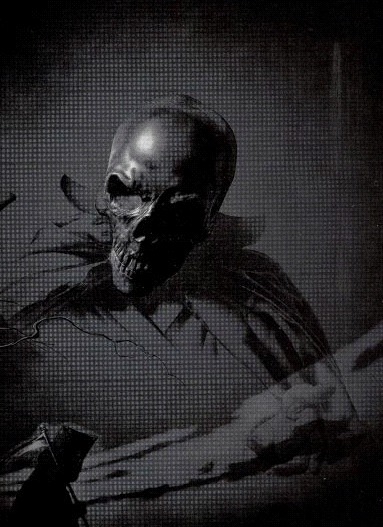
Azalin

Quote:
Originally Posted by CRGreathouse
I saw something posted on
a
rather old (2002) thread and thought I'd bring it up here to see if
you could shed some light on it.
I'd also like to know if
there's any kernel of truth to this story.

If the chap's name was in
the player-group name list, then he was one of the early ones playing the
AD&D game back c. 1977.
The business about the lich
is not accurate. Lich is listed in the dictionary. I never offered payment
to anyone for an idea for a monster. If they wished to not have it published,
fine. Monsters are fairly easy to devise on your own.
Cheers,
Gary

<also, see The
Black Mountains, by Fred Saberhagen>
<alt:lich.png>







